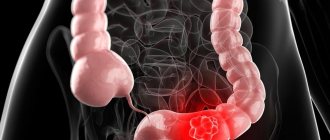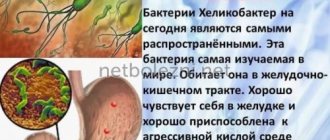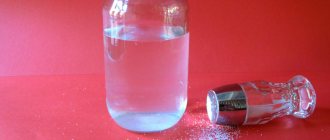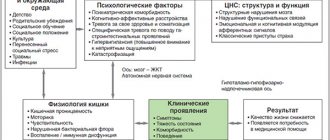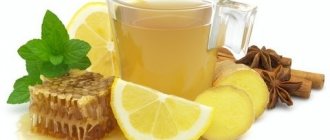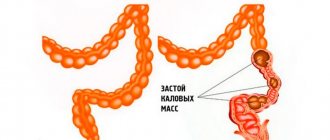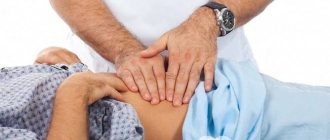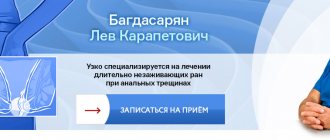What is opisthorchiasis
This is the name for a disease that affects internal organs and can cause purulent cholangitis, acute pancreatitis, bile peritonitis, cirrhosis, and in extreme cases even cancer. Opisthorchiasis is a pathology caused by the Siberian or cat fluke (a type of trematode that parasitizes the hepatic ducts, as well as the gall bladder or pancreas of humans, wild or domestic animals that eat fish).
Infection occurs as a result of eating poorly salted or poorly cooked fish from the carp family, infected with helminth eggs. At the same time, the disease is characterized by difficult diagnosis, since there are no specific symptoms of opisthorchiasis. Frequent signs of pathology are:
- pain in the liver area;
- increase in body temperature;
- vomiting, diarrhea;
- insomnia;
- dizziness;
- irritability;
- joint pain or headaches;
- general weakness;
- allergic rashes, asthma;
- pain in the right hypochondrium.
Diagnostics
Photo: parazity.com
When diagnosing opisthorchiasis, it is important to clarify with the patient whether he is engaged in fishing, whether he has recently traveled to river areas, whether he has eaten poorly processed or raw fish, and the presence of the disease in people with whom the patient is in contact. A general examination can reveal a rash in typical places (upper torso, upper limbs), jaundice of the skin and icteric sclera, enlarged liver and pain on palpation in the right hypochondrium and epigastrium.
Laboratory diagnosis consists of detecting in a general blood test an increase in leukocytes, eosinophilia (a marker of allergic reactions and helminth infestation), and an increase in the erythrocyte sedimentation rate. In the biochemical blood test, there is a clear increase in liver enzymes (ALT, AST, ALP, GGT) and bilirubin.
Serological tests play an important role. Using an enzyme immunoassay using opisthorchiasis antigen, anti-opisthorchiasis antibodies of classes G and M are detected in the blood serum of patients. In some cases, false-positive test results are possible if the patient has other parasitic diseases (echinococcosis, diphyllobothriasis, ascariasis, etc.)
Special research methods to exclude helminthic infestation are called helmintho-ovoscopic. The essence of the technique is to search for worm eggs in separated liquids. Directly for opisthorchiasis, it is important to search for eggs under a microscope using special dyes in feces and duodenal contents, which are collected during FGDS.
To clarify the diagnosis, instrumental diagnostic methods are prescribed. Fibrogastroduodenoscopy shows the functional state of the stomach, duodenal bulb and sphincter of Oddi (the place in the lumen of the duodenum where the common bile duct exits)
Ultrasound examination is used to clarify the condition and presence of inflammation of the bile ducts.
If the clinical picture is unclear, X-rays, MRIs, and CT scans of the abdominal organs may be required.
Treatment of opisthorchiasis
Treatment of the disease caused by parasites takes several months, and the patient is prescribed anthelmintic drugs such as Praziquantel. In addition, treatment of opisthorchiasis with folk remedies involves taking the following drugs:
- choleretic drugs (Hofitol, Allochol);
- hepatoprotectors (Geparsil, Essentiale N, Seligon);
- enzymes;
- medications that improve intestinal motility.
An obligatory aspect of opisthorchiasis therapy is a diet that is followed during the period of taking the drugs and after completion of the main course of treatment. The diet of a patient with parasites should exclude fried, fatty, spicy, smoked, salty and sweet foods. For a while, it is worth minimizing or completely abandoning meat dishes, giving preference to fresh vegetables, fruits and berries. It is recommended to consume dairy-free cereals, low-fat cottage cheese, natural juices, and boiled/baked fruits. Dietary restrictions must be supplemented by active drinking of water.
Medicine for opisthorchiasis in adults
Parasitic pathology is contracted due to non-compliance with hygiene rules or improper food preparation. If symptoms of opisthorchiasis occur, treatment should be started immediately, and primary therapeutic measures should be carried out in a hospital. This is explained by the fact that the medicine for opisthorchiasis in adults, Biltricide, can cause serious side effects - weakness, nausea and vomiting, severe dizziness, hallucinations, etc. However, the drug is necessary for the treatment of parasites, as it promotes the outflow of bile and improves the functioning of the gastrointestinal tract.
Pathogen
The causative agents of opisthorchiasis are liver flukes, including Opisthorchis felineus (cat fluke or Siberian fluke), a small lanceolate-shaped parasite 8-18 mm long and 1.2-2 mm wide. The development of the parasite occurs with the participation of two intermediate hosts: mollusks and carp fish. The final hosts are humans and carnivores.
The first intermediate hosts are freshwater bithiniid mollusks of the genus Codiella, living in drying up shallow floodplain reservoirs. Their infection occurs by ingesting opisthorch eggs that enter the reservoir with the feces of the final hosts, along with silt from the bottom of the reservoir. In the body of the mollusk, the parasite undergoes metamorphosis. This stage of parasite development lasts for 2 months. The resulting cercariae leave the mollusk and actively invade the body of carp fish.
In the body of a fish, the parasite is located in the muscles and subcutaneous tissue. Here it moves to the next stage of development and turns into a metacercaria, which lies in a round gray cyst measuring 0.17-0.21 mm. The larva inside is very mobile. The freed metacercaria (length 0.44-1.36 mm, width 0.15-0.30 mm) has two suckers and an excretory vesicle filled with black granules. 6 weeks after infection of the fish, the parasite becomes invasive, that is, capable of infecting the final host. Of all the life stages of opisthorchis, only the metacercariae is capable of taking root and reproducing in the body of humans and carnivorous mammals. Potential carriers of opisthorchis larvae are ide, dace, roach, rudd, bream, chub, bluegill, white-eye, sabrefish, asp, tench, gudgeon, bleak, minnow, verkhovka, and spinach. In the Ob basin, the highest infestation is observed in ide, slightly less in dace and roach.
The final hosts of the parasites (humans, cats, dogs, foxes, arctic foxes, ferrets and other carnivores) become infected after eating infested fish. In the stomach and the initial part of the small intestine of the final host, metacercariae are freed from cysts, after which they penetrate through the bile ducts into the gallbladder and bile ducts of the liver. Here, after 10-12 days, they reach sexual maturity and begin to lay eggs. Eggs of the parasite that fall on the soil die within 8-10 days, but if they fall into water they remain viable for up to a year. The parasite can live in the body of the final host for 10-20 years.
How to treat opisthorchiasis at home
The therapy process is conventionally divided into several stages, each of which is equally important and therefore cannot be ignored. Opisthorchiasis can be treated at home only in the following sequence:
- preparatory stage, which lasts approximately 10 days;
- drug treatment (duration varies individually);
- recovery phase (takes up to 3 months).
Treatment of opisthorchiasis at home with folk remedies includes methods of cleansing the body of bile, improving the functioning of the digestive organs, and restoring the body after drug treatment. In addition, with the help of folk remedies, toxins formed after the death of helminths are quickly removed from the body. Any procedures at home must be carried out with the permission and under the supervision of a doctor.
Diet
You will have to give up junk food
Once the doctor has diagnosed opisthorchiasis, it is necessary to strictly monitor nutrition and adhere to a diet. First of all, all fish products and semi-finished products, fried, salted and fatty meats are excluded from the diet.
Sweets and baked goods can be consumed only in limited quantities, and the main emphasis should be on fermented milk products, vegetables and fruits. There should be at least 5 meals a day, but in very small portions. The main condition of the diet is the daily consumption of large amounts of fluid (at least 2 liters).
Raw chicken eggs also restore the gallbladder well, and drinking a glass of cucumber pickle or sauerkraut juice on an empty stomach helps remove parasites from the intestines. The diet should include foods rich in fiber (apples, bran, cereals, nuts), and fast food, smoked meats, and soda are prohibited.
Folk remedies for opisthorchiasis
The indication for starting treatment of the disease is the identification of parasites and their larvae during probing. In this case, folk remedies for opisthorchiasis should be used after consulting a doctor and in addition to medications. The presence of clinical manifestations of a parasitic disease serves as a reason for selecting complex therapy that can eliminate it.
How to cure opisthorchiasis with folk remedies? Since traditional methods of treating pathology often cause side effects, many people prefer to replace them with alternative effective methods. You can start taking folk remedies for treating opisthorchiasis after visiting a doctor. The most effective alternative medicine recipes are described below.
- Colon cleansing with mild laxatives
- What can be made from rubber bands, except for a bracelet, photo. Weaving from rubber bands, video
- Spondyloarthrosis of the lumbosacral spine: treatment
Aspen bark against parasites
This folk remedy has proven itself in the treatment of parasites. You need to use an aqueous extract of the plant, which is used to create medications such as Ecorsol and Populin. You can make an infusion yourself, for this you need:
- collect young aspen bark;
- grind the wood using a coffee grinder;
- Pour 20 grams of powder into 2 cups of boiling water and leave for 24 hours;
- Strain the drink using gauze or a fine strainer;
- take 50-80 ml daily half an hour before meals (aspen bark for parasites should be used for at least 2-3 weeks).
Treatment of opisthorchiasis with tar
You can defeat opisthorchiasis in the liver with the help of birch tar. A few drops of the folk remedy should be added to a glass of milk. The medicine is taken three times a day, while treatment of opisthorchiasis with tar lasts only 27 days (after every 9 days a three-week break is taken). Treatment regimen for this folk remedy, indicating the dosage by day:
- 2 drops;
- 4 drops;
- 6 drops;
- 8 drops;
- 10 drops;
- 8 drops;
- 6 drops;
- 4 drops;
- 2 drops.
What does pike bile help with?
The disease, caused by parasites, was previously often treated with pike bile. It is believed that in this case it is better to take fish caught in early spring, since it contains the maximum amount of medicinal substances. You need to use a spoon to remove the bile from three fish into a clean jar and pour in 50 ml of vodka. Opisthorchiasis can be treated with this remedy only for adults; this remedy is not suitable for children under 16 years of age. For three days, take the medicine 1 tbsp. l. on an empty stomach. Pike bile helps get rid of parasites in a short time.
Treatment of opisthorchiasis with herbs
Rehabilitation after treatment for the disease takes a long time. To speed up the recovery of the body after taking medications, herbal decoctions with plantain, St. John's wort, calendula, wormwood, immortelle, elecampane root, blueberry, chaga mushroom, etc. are used. Treatment of opisthorchiasis with herbs takes a long time, but such traditional medicine helps to quickly remove bile and restore the stomach. In addition, herbs stimulate intestinal function, helping to avoid exacerbation or development of various chronic diseases. Decoction recipes:
- Herbal collection against opisthorchiasis. Mix an equal amount of calendula and immortelle flowers, St. John's wort, plantain, wormwood, blueberries, elecampane rhizomes. Pour a tablespoon of the mixture into a glass of boiling water and leave for half an hour. This way you will get an effective remedy for parasites, which you need to take 1/3 cup before meals. Treatment lasts 30 days.
- Herbal decoction containing clove inflorescences. This method of treating opisthorchiasis with folk remedies is designed for a year. Mix 1 tsp. thyme, clover, tansy flowers, wormwood, peeled pumpkin seeds, clove inflorescences, burdock. Grind the ingredients, and then pour boiling water (1 liter). After 3 hours, strain the product and start drinking ½ glass per day on an empty stomach.
Treatment of opisthorchiasis with garlic
One of the most effective folk remedies against parasites is garlic. Therapy with garlic cloves is suitable for children and adults, and not only the symptoms of the disease will be eliminated, but also its cause. How to treat opisthorchiasis with garlic:
- Garlic cloves with milk. Boil 4 cloves of garlic in a glass of milk, infuse the products overnight, and drink the drink on an empty stomach in the morning. Repeat the procedure over the next three days.
- Garlic with cloves. Boil chopped garlic cloves (3 pieces) in milk (200 ml) for 5 minutes, add 3 cloves and let simmer for a couple more minutes over low heat. Take the cooled mixture three times a day for 10 days.
- Garlic tincture for opisthorchiasis. Pass 3 garlic cloves through a press, pour hot milk over the pulp and leave to steep for 6 hours. Every day for 5 days, do an enema before going to bed using the prepared liquid.
Herbal collection
One of the most effective herbal mixtures is a mixture of tansy grass, wormwood, sweet clover and buckthorn. Herbs must be taken in equal proportions. Pour 5 g of the mixture into a glass of water and bring to a boil.
The infusion should be taken in the morning on an empty stomach and half a glass before bedtime. To eliminate parasites, the infusion should be drunk for a week. If after the first course the symptoms of the disease do not go away, during the second course the dose should be doubled.
Opisthorchiasis is a dangerous and unpleasant disease. Folk remedies are no less effective than pharmaceutical drugs. However, before using them, it is recommended to consult a doctor who will select the optimal means.
Prevention
The main cause of helminth infection is the consumption of insufficiently processed fish containing parasite larvae, therefore the prevention of opisthorchiasis is based on proper preparation of seafood. The following measures are required to avoid opisthorchiasis:
- cook the fish for at least 15 minutes in boiling water;
- when salting, each piece must be generously covered with salt (if the fish weighs up to 1 kg, the parasites die after 3 days of contact with salt, with a larger weight - after 10 days);
- You need to freeze fish for at least 40 hours, at a suitable temperature of minus 28 degrees.
